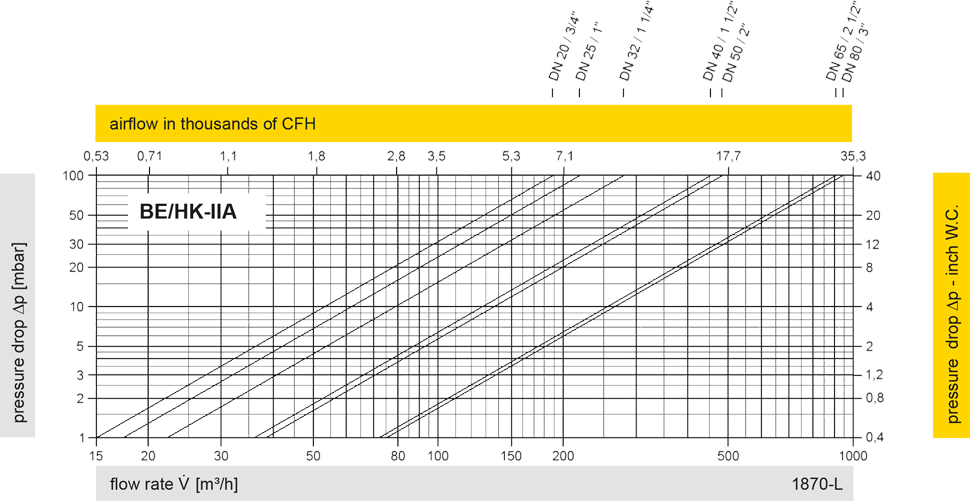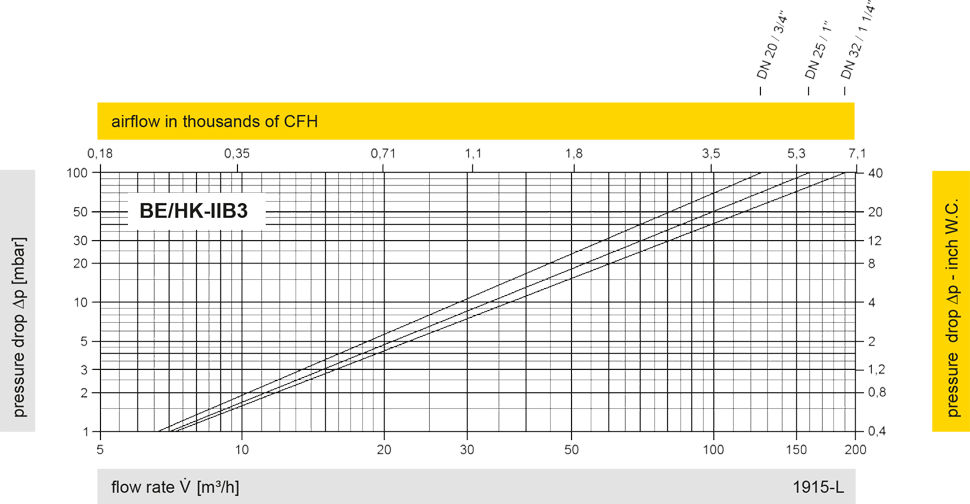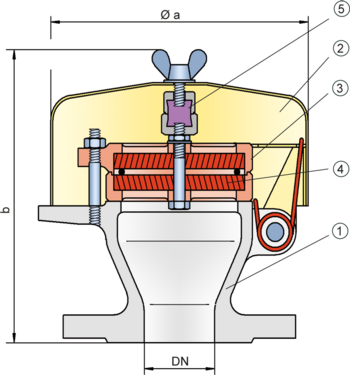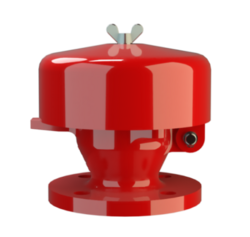BE/HK
Deflagration Flame Arrester, endurance burning proof, End-of-Line
- weather hood protects against environmental impact (i.e. weather, bird nests, etc.)
- weather hood will open and signal the impact of a flame
- endurance burning protection for IIB3 and IIA vapour (NEC group C and D); only for PROTEGO® BE/HK and BE/HK-H
- fusible link is resistant against chemicals
- modular design allows replacement of single FLAMEFILTER® discs
- easy maintenance
- modular design results in low spare part costs
- protection against atmospheric deflagration and endurance burning
Función y Descripción
For many years the PROTEGO® BE/HK end-of-line deflagration flame arrester has been successfully used to protect vessels and process engineering apparatus which are not pressurized. The device provides protection against flame transmission through atmospheric deflagration and stabilized flames which can burn for very long time on the flame arrester element surface, so called endurance burning. Main application area is on in- and out-breathing and vent lines, with the goal to prevent flame transmission caused by endurance burning or atmospheric deflagration from propagating into the vessel or plant.
The PROTEGO® BE/HK consists of a housing (1), a weather hood (2) and the PROTEGO® flame arrester unit (3). During normal operation the metal weather hood is in a closed position. If a stabilized flame burns on the flame arrester element surface, the fusible link (5), located in a center position, will melt and let the spring loaded weather hood move into the open position. The PROTEGO® flame arrester unit consists of two FLAMEFILTER® discs (4), which are installed in a FLAMEFILTER® casing. The FLAMEFILTER® gap size depends on the devices intended use.
Detailing the operating conditions such as the temperature, explosion group and the composition of the fluid, enables PROTEGO® to select the best end-of-line deflagration flame arrester for your application. The PROTEGO® BE/HK series end-of-line deflagration flame arrester is available for substances from explosion groups IIA to IIB3 (NEC groups D to C MESG ≥ 0.65 mm). In a modified design, this device is also available for Ethanol applications.
The standard design can be used with operating temperature of up to +60°C / 140°F.
Type-approved according to ATEX Directive as well as other international standards.
Dimensiones
To select the nominal size (DN), please use the flow capacity charts on the following pages
| DN | 20 / ¾" | 25 / 1" | 32 / 1¼" | 40 / 1½" | 50 / 2" | 65 / 2½" | 80 / 3" | |
| a | 163 / 6.42 | 163 / 6.42 | 163 / 6.42 | 183 / 7.20 | 183 / 7.20 | 218 / 8.58 | 218 / 8.58 | |
| BE / HK-IIA | b | 180 / 7.09 | 177 / 6.97 | 177 / 6.97 | 190 / 7.48 | 190 / 7.48 | 200 / 7.87 | 200 / 7.87 |
| BE / HK-IIB3 | b | 180 / 7.09 | 177 / 6.97 | 177 / 6.97 | - | - | - | - |
Selección de materiales para la vivienda
| Design | B | C |
| Housing | Steel | Stainless Steel |
| Weather hood | Steel | Stainless Steel |
| Flame arrester unit | A | A, C |
Combinación de materiales para la unidad apagallamas
| Design | A | C |
| FLAMEFILTER® cage | Stainless Steel | Stainless Steel |
| FLAMEFILTER® | Stainless Steel | Hastelloy |
| Spacer | Stainless Steel | Hastelloy |
Selección del grupo de explosión
| MESG | Expl. Gr. (IEC / CEN) | Gas Group (NEC) |
| > 0,90 mm | IIA | D |
| ≥ 0,65 mm | IIB3 | C |
Tipo de bridas de conexión
| EN 1092-1; Form B1 |
| ASME B16.5 CL 150 R.F. |
Modelo y especificación
There are four different designs:
End-of-line deflagration flame arrester, basic design | BE/HK - – |
End-of-line deflagration flame arrester with heating jacket | BE/HK - H |
Special designs available on request
Diagrama de flujo volumétrico


Los diagramas de flujo volumétrico han sido determinados con un banco de pruebas de caudal calibrado y certifi - cado por TÜV. El flujo volumétrico V. en [m³/h] y el CFH se refi eren a las condiciones estándar de referencia de aire según ISO 6358 (20°C, 1bar). La conversión a otras densidades y temperaturas están referidas en el Vol. 1: “Fundamentos Técnicos”.

